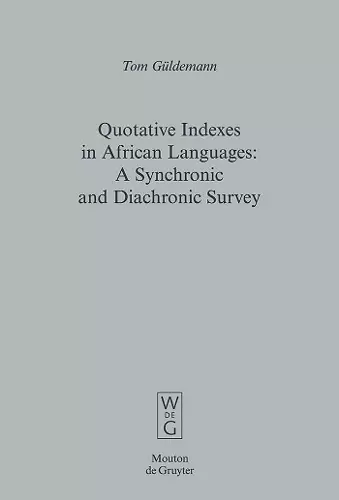Quotative Indexes in African Languages
A Synchronic and Diachronic Survey
Format:Hardback
Publisher:De Gruyter
Published:17th Nov '08
Currently unavailable, and unfortunately no date known when it will be back

The book represents the results of a synchronic and diachronic cross-African survey of quotative indexes. These are linguistic expressions that signal in the ongoing discourse the presence of a quote (often called "direct reported speech"). For this purpose, 39 African languages were selected to represent the genealogical and geographical diversity of the continent. The study is based primarily on this language sample, in particular on the analysis of quotative indexes and related expressions from a text corpus of each sample language, but also includes a wide range of data from the published literature on other African as well as non- African languages. It is the first typological investigation of direct reported discourse of this magnitude in a large group of languages. The book may thus serve as a starting point of similar studies in other geographical areas or even with a global scope, as well as stimulate more detailed investigations of particular languages. The results of the African survey challenge several prevailing cross-linguistic generalizations regarding quotative indexes and reported discourse constructions as a whole, of which two are of particular interest. In the syntactic domain, where reported discourse has mostly been dealt with under so- called sentential complementation, the study supports the minority view that direct reported discourse and also a large portion of indirect reported discourse show hardly any evidence for the claim that the reported clause is a syntactic object complement of some matrix verb. With respect to grammaticalization, the work concludes that speech verbs are, against common belief, not a frequent source of quotatives, complementizers, and other related markers. Far more frequent sources are markers of similarity and manner; generic verbs of equation, inchoativity, and action; and pronominals referring to the quote or the speaker. Another more general conclusion of the study is that especially direct reported discourse can be fruitfully analyzed as part of a larger linguistic domain called "mimesis". This comprises expressions which represent a state of affairs by means of enactment/ performance rather than with the help of "canonical" linguistic signs and includes, besides reported discourse, world-referring bodily gestures, ideophone-like signs, and non-linguistic sound.
ISBN: 9783110185904
Dimensions: unknown
Weight: 1134g
707 pages